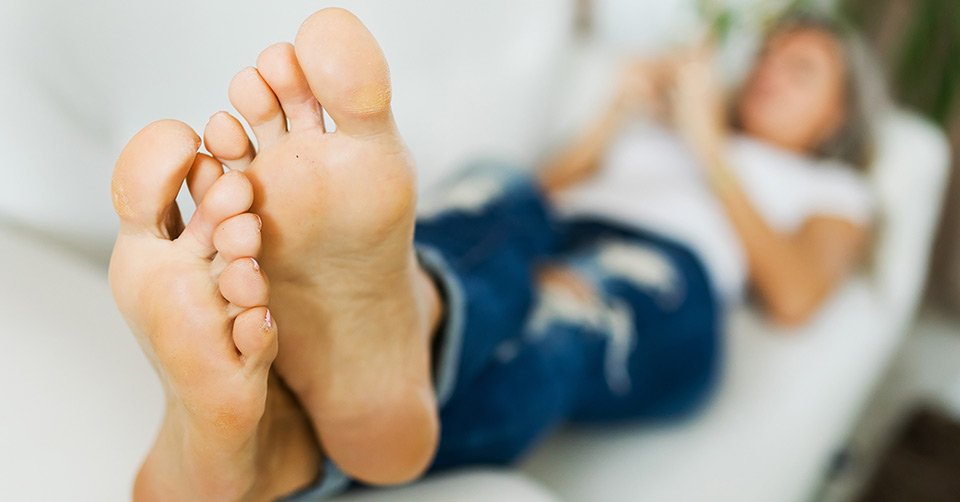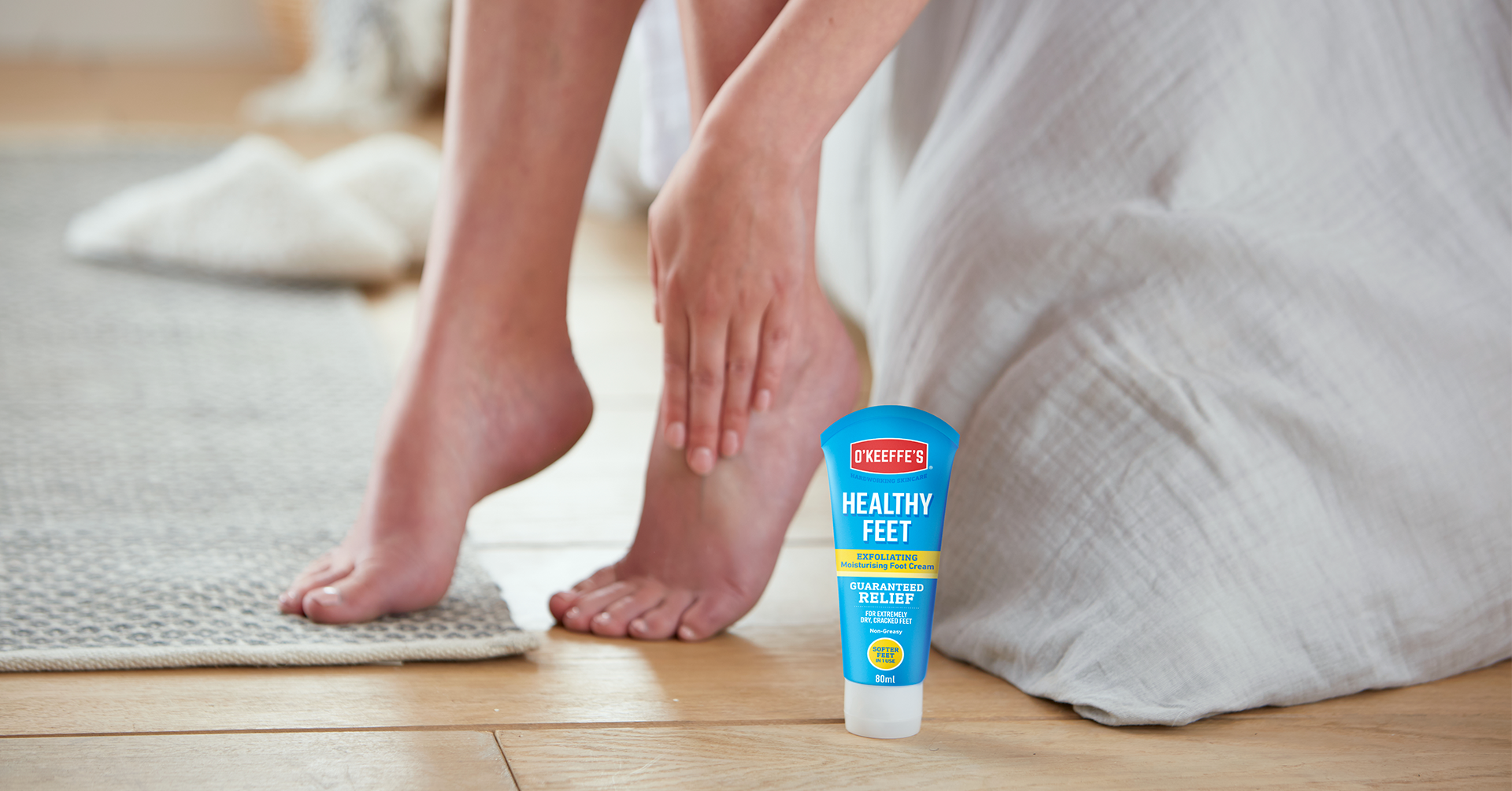Combine O’Keeffe’s Healthy Feet & O’Keeffe’s Healthy Feet Exfoliating for a routine that will guarantee you softer, ...
READ MORE

Cracked Heels – Causes and Treatment
Cracked heels, also referred to as heel fissures, are a common foot problem especially for people who spend all day on their feet.
In many cases, the cracks are minor—an unsightly annoyance, however; if not properly addressed, the condition can worsen resulting in significant pain, discomfort and sometimes even infection.
When the skin on your heels is unable to retain sufficient moisture, a combination of dryness and pressure weakens the skin, ultimately leading to breaks. There are a number of factors that can influence the development of cracked heels, however in most cases, the condition can be dealt with at home.
Here we will look at the causes of heel fissures as well as some simple steps you can take towards prevention and relief.
Causes of Cracked Heels
Cracked heels are primarily the result of dry skin on the feet, often where the skin has thickened. The skin on the feet is particularly vulnerable to dryness because of its reliance
on sweat secretions for hydration. External factors such as low humidity, friction, sun exposure, overuse of soaps and a lack of hygiene can also play a role, as can genetics, age and nutrition.
According to the Institute of Preventative Foot Health, there are a number of other causes that may contribute to the condition. These include:
- Bio-mechanical problems that increase pressures in the heel area;
- Prolonged standing, especially on hard floors;
- Obesity, which increases the pressure on the normal fat pad under the heel, causing it to expand sideways. If your skin is not supple and flexible, the pressure can cause cracking or fissures;
- Open backs on shoes or sandals, which allow the fat pads in the heel to expand sideways and increase pressure on the skin, causing it to crack.
How to prevent Cracked Heels
As is so often the case, a little understanding goes a long way.
Though there are some things you can’t influence, like age and genetics; there are a number of simple steps you can take to help ensure your feet retain sufficient moisture.
Firstly, ensure you drink enough water and eat a diet that’s rich in healthy fats and nutrients such as vitamin A and zinc. Be sure to moisturise often, using a quality foot cream that helps seal in hydration. Also, keep in mind that water can have a drying effect on the skin, especially hot water— limit your showers to under 10 minutes in lukewarm water. Using a moisturising soap free of harsh cleansers is also a good idea. When it comes to footwear, well fitting shoes (with backs) are a must to avoid added pressure from a lack of support.
How to treat Cracked Heels
Sometimes, despite your best efforts, cracked heels still develop. You can usually get things under control at home though, by giving your feet some TLC.
Start by soaking your feet in lukewarm water. Gently exfoliate any hard thick skin around your heels and follow with a thick moisturising foot cream that has a high concentration of glycerin and allantoin to help draw in and retain moisture. It’s especially important to remember not to exfoliate dry skin, as this can damage the skin further and make the problem worse.
Through a combination of prevention and treatment, you should be back on your feet and feeling good in no time at all. If you’re not, then make sure you go and see your GP.
RELATED ARTICLES


Introducing Healthy Feet Exfoliating! O’Keeffe’s Healthy Feet Exfoliating is our exfoliating foot cream that softens ...
READ MORE

When it comes to dry skin, our feet always seem to be in need of a little extra attention. The feet are especially ...
READ MORE